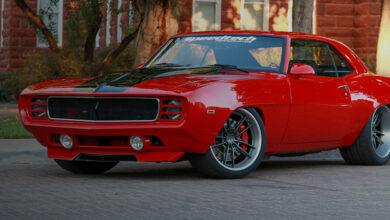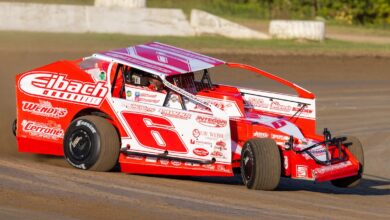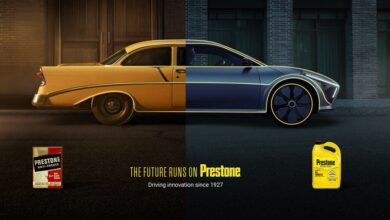Detroit Speed Inc. and BMW North America recently partnered on a project that literally went down into the record books.
The partnership began when BMW approached Detroit Speed with an engineering dilemma: how to design and build a refueling system between two cars to allow BMW to refuel the 2018 BMW M5 while drifting on a wet skid pad with a 2017 M5. The reward? Securing the Guinness World Record for the greatest distance vehicle drift in eight hours.
The goal for BMW was not only to break the record, but to introduce the new M5 that allows the driver to put the car in all-wheel drive for daily driving conditions, and to switch to two-wheel drive mode for a wide-open experience.
After Detroit Speed earned the bid in late-September, the timeline quickly took shape to execute the drifting stunt in late-November. This meant Detroit Speed R&D engineers, Ryan Mathews and Matt Butts, only had four to five weeks to design, fabricate and prove their engineering skills to build such a system.
Through rounds of questions and conversations with BMW team members, the Detroit Speed engineers went to work. The 2017 M5 would be the refueling car, and the 2018 would be the world record car.
In Detroit Speed fashion, perfection, thoughtfulness and quality could be seen in every detail, according to the company. Bolt-in structures were built underneath the trunk panel in both cars, which the auxiliary fuel cells were mounted to. A transfer pump was mounted in the 2017 M5 to allow for an approximate fuel transfer of 10-12 gallons per minute. A separate bolt-in platform and tethering system was built in the 2017 M5 for a refueling operator. The refueler job, turns out, went to Detroit Speed’s own, Matt Butts.
With two drivers, a refueler, two cars drifting less than two-feet apart, and enough fuel to make for a really bad worst-case scenario, safety was a major concern. A fire suppression system was installed in each vehicle, and separate fire extinguishers were accessible for each driver. A custom firewall was fabricated for each vehicle and installed at the trunk access opening behind the rear seats. Switches were wired for the driver of each M5 to control the transfer of fuel only when they were ready, either from their car to the other (2017 M5), or from their auxiliary tank to the stock tank (2018 M5). Butts installed a manual release of his harness so in the event of fire, he could escape under his own control.
The winning, irreplaceable key in the whole fabrication project was how to successfully get the fuel transferred between both cars, according to Detroit Speed. After countless hours of product research and talking with various vendors, the Detroit Speed team found what they were looking for: a locking dry break to allow for fast refueling.
To keep from modifying the body panels, the Detroit Speed team designed a mounting plate to fit perfectly in the fixed rear passenger window. Coupled with approximately 12-feet of hose and a safety break away similar to what one might find at a standard gas station pump, once the dry break was connected, the distance variable between both cars became less of a concern.
By the first test session on Nov. 30, the system was built, tested and proven to work in non-drift conditions. Questions and uncertainties still remained. Will it perform under drifting conditions where gravity will play a factor? Will the drivers be able to get the cars close enough for Matt to connect the dry break? Can the drivers then keep their cars close enough for the length of time needed to transfer the fuel from one tank to another? Will the cars hit each other? Will they pull too far apart and break the hose, or worse, the dry break itself? Will they spin out?
With a team consisting of BMW Performance Center drivers, Johan Schwartz and Matt Mullins, BMW engineers in the U.S. and Germany, Detroit Speed engineers, and a conglomerate of marketing and technical staff, the group would combine efforts and expertise for the next two weeks, determined to achieve the goal.
On Monday, Dec. 11, the team perfected the stunt and successfully set the record for greatest distance vehicle drift in eight hours at 232.5 miles. They also set a new world record for the longest twin vehicle drift at 49.25 miles.



